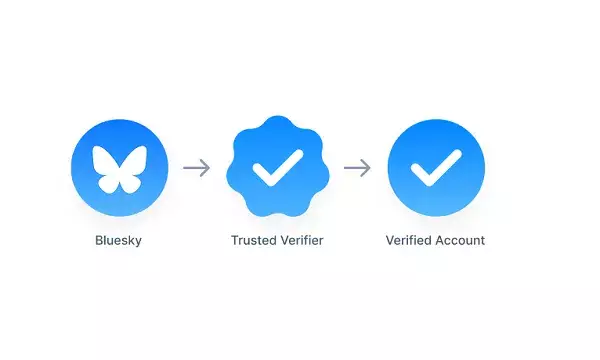Bluesky, the innovative social media platform gaining traction among users seeking an alternative to established giants, has recently expanded its in-app verification checkmarks. This initiative aims to enhance trust and credibility among its user base by allowing more authoritative sources to gain recognition effectively. At a time when misinformation proliferates across social media, Bluesky’s efforts to create a structured verification system reflect a decisive, and perhaps necessary, move toward authenticity in online interactions.
A Unique Approach to Verification
What sets Bluesky apart from its competitors is its distinctive verification methodology. Users who pass the verification process will receive a rounded checkmark that mirrors the platform’s logo, signaling their authenticity. However, the process opens up a new avenue for organizations, allowing them to become “trusted providers.” Noteworthy institutions like The New York Times can now apply for this status, enabling them to authenticate their own journalists while relieving Bluesky of the logistical burden of verifying individual accounts.
This shift not only benefits Bluesky by reducing their workload but also offers a fluid structure for organizations to manage their presence on the platform. This delegation of power, however, gives rise to potential complications. The underlying question remains: Who determines the worthiness of verification, and what criteria are employed to define a user’s notability?
The Notable Conundrum
Bluesky defines a “notable” account as one that is significant within its respective field or geographic region. This definition is inherently ambiguous, raising valid concerns over its implications. While professional recognition and media presence are crucial for establishing notability, the subjective interpretation of these concepts remains troubling. For instance, who decides what qualifies as sufficient media coverage or which reference platforms are deemed credible?
Such ambiguities suggest an inclination toward elitism, where only certain voices gain prominence while others struggle for acknowledgment. This not only alienates lesser-known professionals but also risks overshadowing diverse perspectives that could contribute to richer dialogues across the platform.
Crafting a Balanced Verification Process
Bluesky has stated that verification will be based on various indicators, yet the lack of concrete guidelines leaves room for interpretation and inconsistency in its application. The absence of direct communication from Bluesky to applicants adds to the uncertainty. Users will receive feedback only if their applications succeed, which can be daunting for those who question their own notability.
As Bluesky moves forward with its verification process, clarity in criteria and decision-making agents will be crucial. A transparent system can foster an atmosphere of trust, compelling users to engage more confidently without fear of misrepresentation. Furthermore, providing clarity on how identities are verified could stamp out potential doubt surrounding the integrity of the platform.
A New Layer of Trust in Social Media
While cracks may exist within Bluesky’s verification policy, the initiative points to a future where trust can be revived on social platforms. The aim to counteract impersonation and misinformation through verification is commendable. If implemented with diligence, Bluesky could emerge as a benchmark for credibility in social media, demonstrating the potential of a community-driven approach.
This development could reframe how social media retains its authenticity and combats misinformation. However, this task isn’t without its challenges. The journey towards establishing a meaningful verification process will require Bluesky to navigate murky waters, balancing inclusivity and authenticity while ensuring that the true essence of social media as a diverse and open platform remains intact. The stakes are high, but the potential rewards of a more credible social media ecosystem make the endeavor worthwhile.

